The Every Student Succeeds Act (ESSA) requires the Office of the State Superintendent of Education (OSSE) to use its US Department of Education (USED) and State Board of Education (SBOE) approved statewide accountability framework to regularly designate the lowest-performing schools for additional support from OSSE. In this post, we explain how we calculate these school-level summative scores.
USED understandably has a lot of rules, but, in short, they require us to use comparable and reliable metrics to differentiate performance between schools. State education agencies (SEAs), like OSSE, need to be able to identify the schools that need support as well as set meaningful goals and expectations. We are not allowed to give out extra credit to certain schools or give everyone a top score.
Here are the steps we take to calculate scores and make designations:
Step 1: Calculate the metric scores for each student group.
OSSE uses quite a few metrics, or measurements, in its calculation of summative scores. The full list is below in Step 3. Schools accumulate points for each metric to add up to their overall score. However, in order to differentiate performance and ensure that schools are serving all students, we use “floors” and “targets” that are specific for each metric and are based on performance across the District. The closer to the target, the more points a school receives for that metric. Schools that are above the target receive all the available points. On the other end of the scale, the floor is where a school begins to earn points, so scores below the floor earn zero points. Most floors and targets are set relative to the 10th and 90th percentile of performance for the District for each metric, respectively. (We will have a separate Data Discovery post on floors and targets soon, so stay tuned!)
Step 2: Combine student group scores into single metric scores.
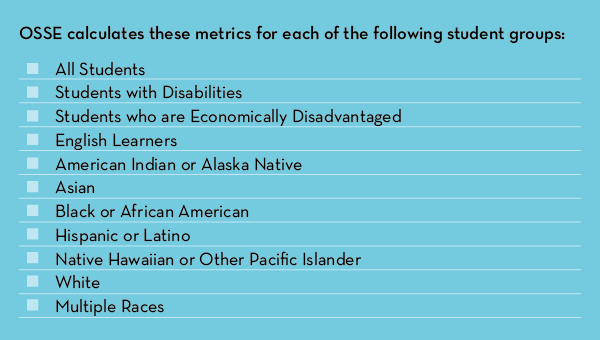
By using student groups in this way, schools are accountable for helping all students in the building.
By weighting the student group scores according to the calculation below, OSSE generates one school score for each metric within the accountability system.
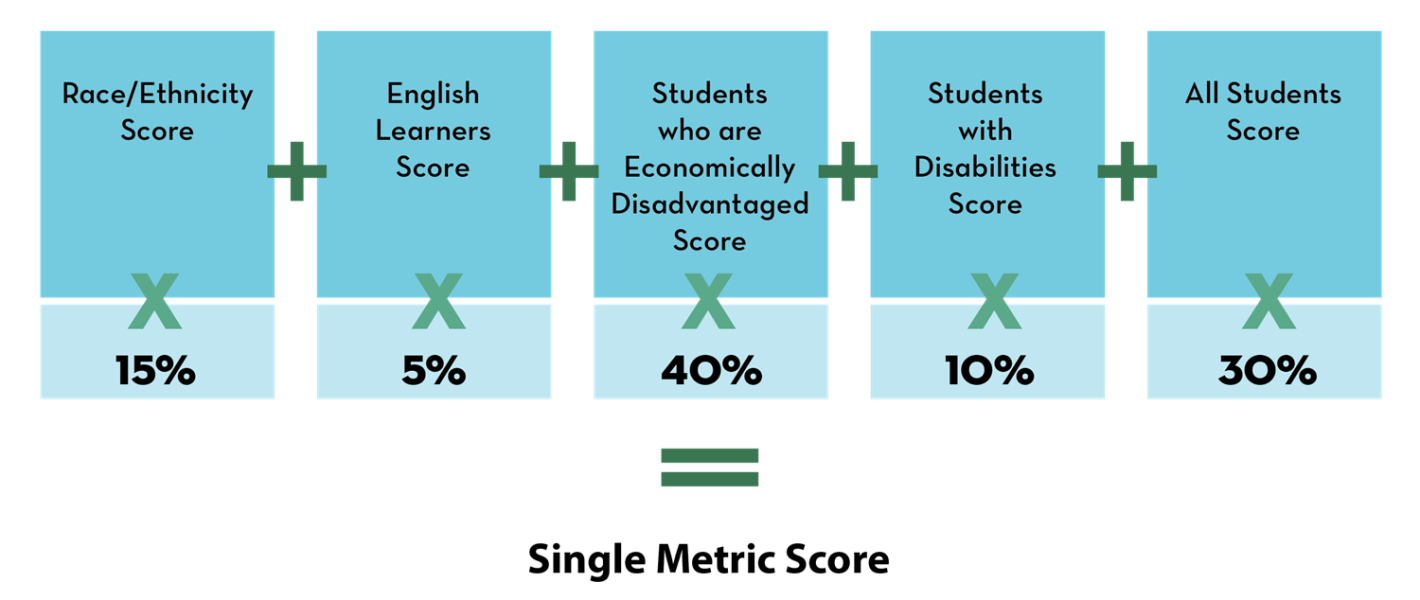
Then we divide those by the total number of points possible (note that this can vary because every school does not have every student group). For example, if a school does not meet the minimum number of students (or “n-size”) for English Learners, its total score would be divided by 95. Every race/ethnicity group that meets the n-size requirement of ten is equally weighted.
Step 3: Calculate school-level summative scores.
OSSE must use the metrics approved by USED to calculate summative scores for each school. The combined student group metric scores, which we talked about in Step 2, are all multiplied by a specific weight, added together, and divided by 100 (or in the case where all metrics are not available at the school (e.g., there’s no reenrollment for the first year of a school’s existence), we divide by the total number of possible points). Here’s how it breaks down for each grade band:
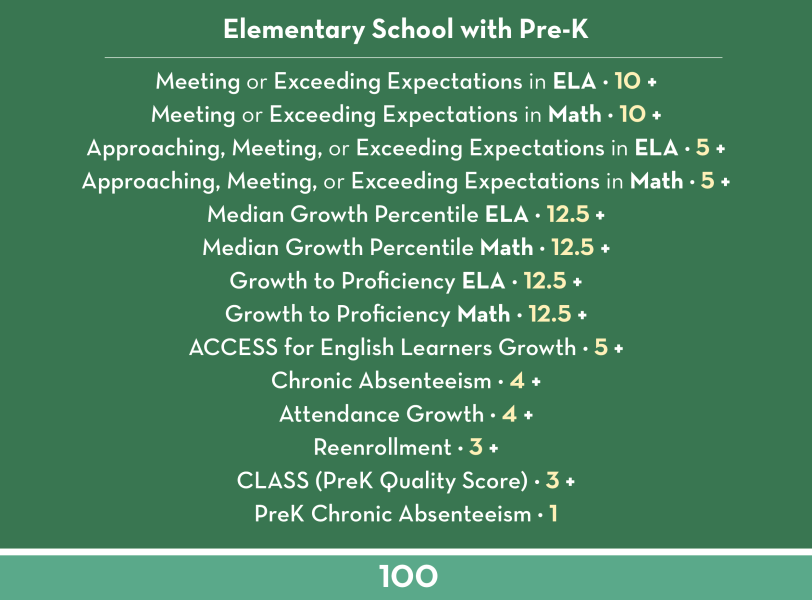
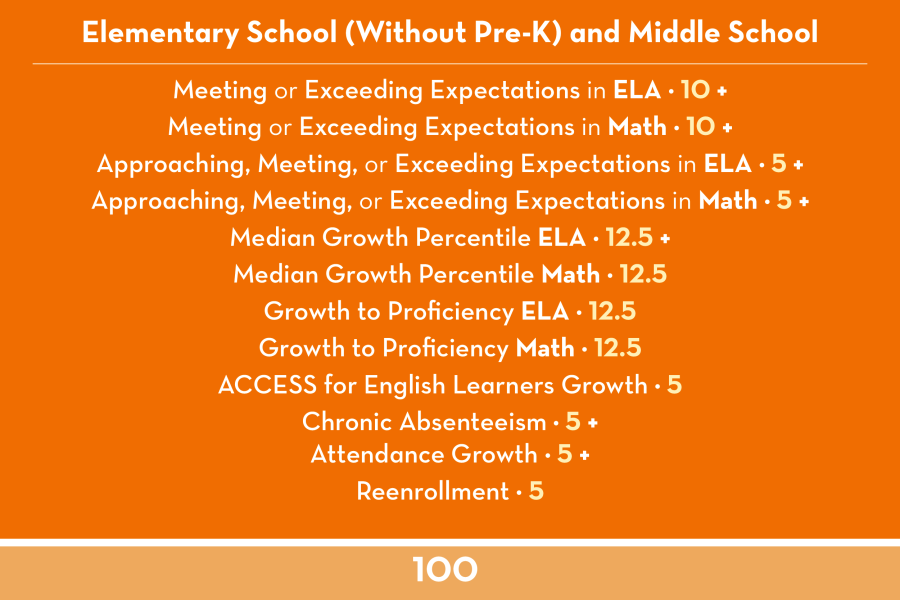
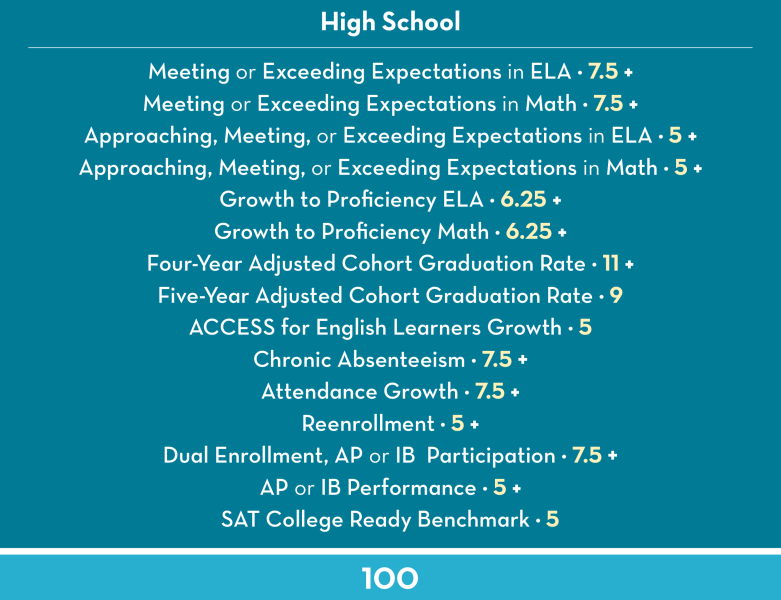
Please note that schools must be eligible for more than 50 points in order to receive a summative score (so a pre-K only school will not receive a summative score).
You may be wondering about schools that serve students K–8 or 6–12. For schools that serve students within more than one grade band, we calculate summative scores for each grade band (elementary school, middle school, or high school) and then weight the frameworks according to the percent of students served. For example, if a school is K–8, and K–5 makes up 75 percent of their student population and 6–8 makes up 25 percent of their student population, the schools’ summative score will be (Elementary Framework Score x .75) + (Middle School Framework x .25).
Step 4: Makes designations for school support.
Once we have calculated scores for every public school in the District that qualifies, we need to make the school support designations. We must designate the following:
Comprehensive Support and Improvement (CSI) Schools, Low Performing
- Definition: The lowest-performing 5 percent of all schools receiving Title I, Part A funds in DC.
- Methodology for Identification: OSSE identifies between eight to 10 schools serving elementary and middle schools and two to four schools serving high school.
Comprehensive Support and Improvement (CSI) Schools, Low Graduation Rate
- Definition: Public high schools in the state failing to graduate one third or more of their students.
- Methodology for Identification: OSSE identifies all high schools in which both four- and five-year Adjusted Cohort Graduation Rates fall below 67 percent.
Additional Target Support and Improvement Schools (ATSI)
- Definition: Schools with subgroups performing as poorly as the schools identified for comprehensive support and improvement in category one above.
- Methodology for Identification: OSSE identifies schools who have a student group scores below that of the school scores of those identified for CSI.
Targeted Support and Improvement Schools (TSI)
- Definition: Any school with one or more “consistently underperforming” subgroups of students, based on all indicators in the statewide system.
- Methodology for Identification: Any school with a student group identified under ATSI for two of three consecutive years.
Learn More
That’s it! That’s how it works. Thank you for reading to the end! If this blog post has just piqued your interest, you can check out our full DC School Report Card Technical Guide, which goes into great detail on everything above. We also have more detail about school support designations, how we support them, and where the funding comes from on our website. You can always access the DC School Report Card at osse.dc.gov/dcschoolreportcard.


